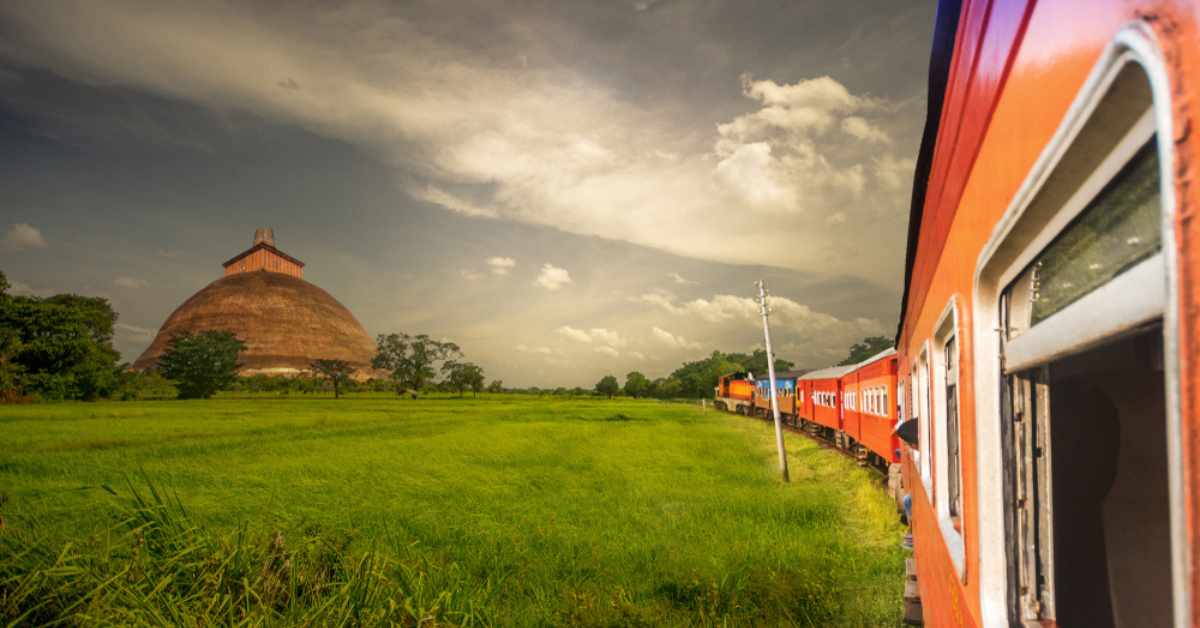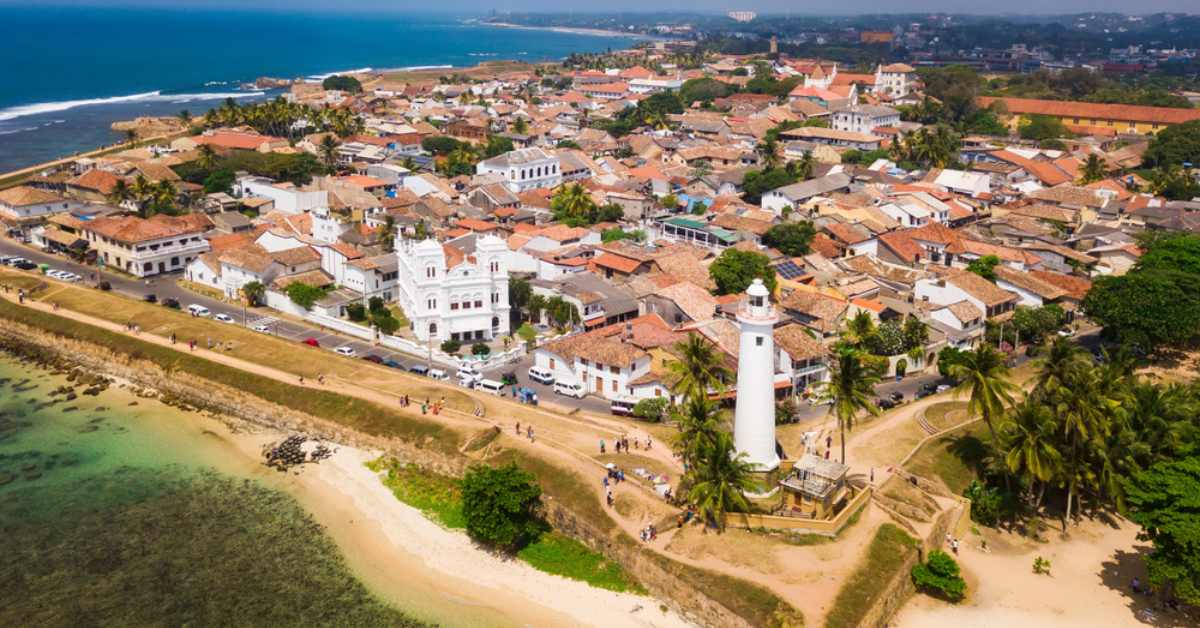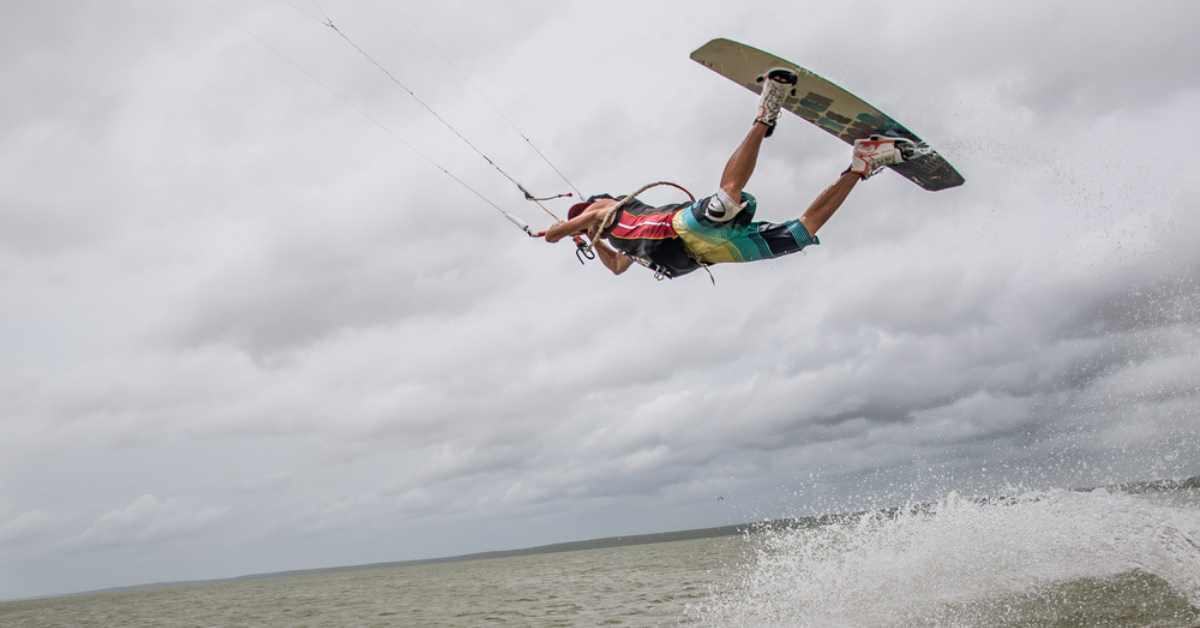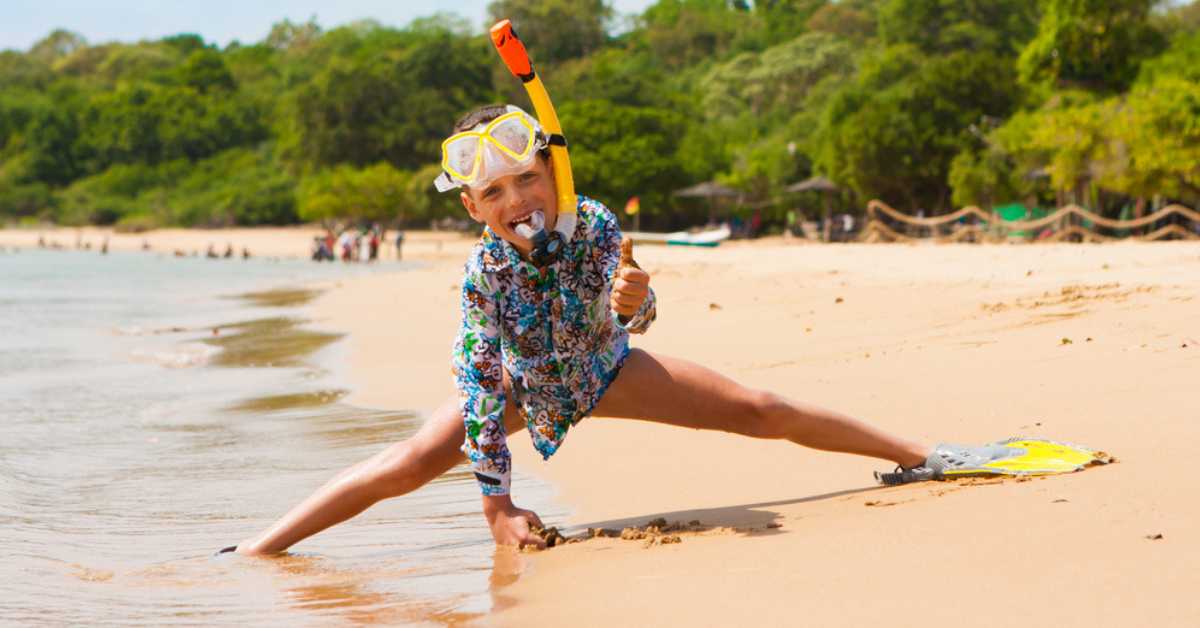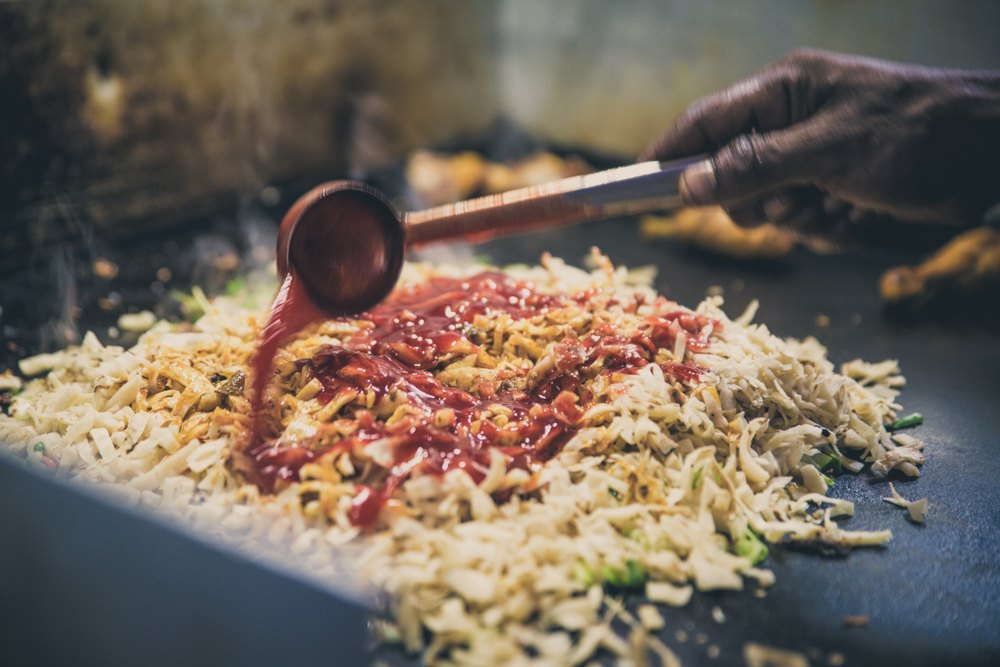
Welcome to Sri Lanka! If you plan your first visit to this beautiful island nation, you’re in for an unforgettable experience. From its stunning beaches to its rich cultural heritage, Sri Lanka offers many attractions that cater to every traveller’s interests. In this article, we’ll guide you on where to go for the first time in Sri Lanka, provide essential tourist advice, offer preparation tips, and answer common questions to ensure a safe and enjoyable trip. So let’s dive in!
Where to Go for the First Time in Sri Lanka
Exploring Colombo, the Capital City
When arriving in Sri Lanka, start exploring Colombo, the bustling capital city. Colombo offers a vibrant mix of modern and colonial influences, with its lively markets, historic buildings, and cosmopolitan atmosphere. Visit the iconic Galle Face Green, a promenade by the sea, where you can take a stroll or indulge in delicious street food. Don’t miss the opportunity to immerse yourself in the local culture by visiting the vibrant Pettah Market and exploring the National Museum of Colombo.
Also Read : Places to visit in Colombo
Discovering the Cultural Triangle
For a deeper understanding of Sri Lanka’s rich history and heritage, head to the Cultural Triangle. This region encompasses the ancient cities of Anuradhapura, Polonnaruwa, and Sigiriya, which are UNESCO World Heritage Sites. Marvel at the magnificent ruins, ancient temples, and intricate carvings that showcase the country’s ancient civilization. Climb the Sigiriya Rock Fortress for breathtaking views and explore the Dambulla Cave Temple, adorned with colourful Buddhist murals in Anuradhapura and Polonnaruwa.
Relaxing on Sri Lanka’s Beautiful Beaches
No trip to Sri Lanka would be complete without spending time on its pristine beaches. You’ll find various coastal destinations, from the golden shores of Bentota to the palm-fringed Mirissa Beach. Unwind on the powdery sand, soak up the sun, and indulge in thrilling water sports like snorkelling or surfing. For a truly unique experience, visit Arugam Bay, a world-renowned surfing spot with a laid-back vibe.
Advice for Tourists in Sri Lanka
As a Sri Lank tourist, it’s essential to be mindful of the local customs and traditions. The people of Sri Lanka are warm and welcoming, and respecting their cultural practices is necessary. Dress modestly, especially when visiting religious sites, and remove your shoes before entering temples or homes. Additionally, be cautious of scams and touts who may try to take advantage of tourists. Researching and booking your activities and accommodations through reputable sources is always good.
How to Prepare for Sri Lanka
Before embarking on your Sri Lankan adventure, check your country’s passport and visa requirements. Ensure your passport is valid for at least six months before departure. Apply for a tourist visa in advance or use the visa-on-arrival facility. Getting travel insurance to protect yourself against unforeseen circumstances is also recommended. Pack suitable clothing for the tropical climate, including lightweight and breathable fabrics and essentials like sunscreen, insect repellent, and comfortable walking shoes.
Taking Cash to Sri Lanka
The currency in Sri Lanka is the Sri Lankan Rupee (LKR). While credit cards are widely accepted in major establishments, carrying cash for convenience is advisable, especially when travelling to remote areas or local markets where cash transactions are every day. ATMs are readily available in cities and tourist areas, allowing you to withdraw cash using international debit or credit cards. It’s recommended to notify your bank about your travel plans to avoid any issues with card usage.
Exploring the Nicest Parts of Sri Lanka
Sri Lanka boasts numerous breathtaking destinations, but some of the most excellent parts include the following:
The Scenic Hill Country of Nuwara Eliya
Nuwara Eliya is often called “Little England” due to its cool climate and colonial architecture. This picturesque hill town is known for its tea plantations, scenic landscapes, and waterfalls. Explore the lush greenery of Horton Plains National Park, visit a tea factory to learn about the tea-making process, and enjoy a leisurely boat ride on Lake Gregory.
Also Read: Places to visit in Nuwara Eliya
The Cultural Heritage of Kandy
Kandy is a culturally significant city and home to the Temple of the Tooth, which houses a relic of the Buddha’s tooth. Witness the beautiful rituals and traditional dance performances at the temple. Don’t miss the opportunity to explore the Royal Botanical Gardens, where you can stroll amidst a vast collection of exotic plants and enjoy a serene environment.
Also Read : Places to Visit in Kandy
Exploring Galle’s Colonial Grandeur
Galle, a UNESCO World Heritage Site, is a coastal city that showcases the remnants of Sri Lanka’s colonial past. The city’s star attraction is the Galle Fort, a 17th-century Dutch fortification that is a testament to the island’s history. Explore the narrow cobblestone streets with charming Dutch-colonial buildings, boutique shops, and art galleries. Visit the iconic Galle Lighthouse, stroll along the fort’s ramparts, and enjoy panoramic views of the Indian Ocean. Galle is a captivating blend of colonial architecture, vibrant markets, and a lively cultural scene that offers a unique glimpse into Sri Lanka’s colonial heritage.
Also Read: Places to Visit in Galle
Discovering the Natural Beauty of Ella
Ella, a small town nestled amidst the misty hills of Sri Lanka’s central highlands, is a haven for nature lovers and adventure seekers. The main attraction in Ella is the awe-inspiring Ella Rock, a challenging but rewarding hike that offers breathtaking panoramic views of the surrounding valleys and tea plantations. Another must-visit spot is the Nine Arch Bridge, an architectural marvel set amidst lush greenery. Watch in awe as trains pass over this iconic bridge, creating a mesmerizing spectacle. Ella’s tranquil atmosphere, stunning waterfalls like Ravana Falls and Diyaluma Falls, and verdant tea estates make it an ideal destination for those seeking solace in nature.
Also Read: Places to Visit in Ella
Safari Adventures in Sri Lanka
Embarking on a safari in Sri Lanka is an exhilarating experience that allows you to witness the country’s incredible wildlife. Some of the best safari destinations include:
- Yala National Park and Safari: Ultimate Guide: Known for its high density of leopards, Yala National Park is a haven for wildlife enthusiasts. Explore the park’s diverse ecosystems and spot elephants, sloth bears, and abundant bird species.
- Udawalawe National Park: Famous for its large population of elephants, Udawalawe National Park provides an opportunity to observe these majestic creatures in their natural habitat. Watch for water buffalo, crocodiles, and various bird species.
- Wilpattu National Park: Wilpattu is the largest national park in Sri Lanka and is renowned for its picturesque landscapes and elusive leopards. Explore its dense forests, tranquil lakes, and spot wildlife such as elephants, deer, and numerous bird species.
Also Read: Safari Guide in Sri Lanka
Whale Watching in Sri Lanka
Sri Lanka is one of the best places in the world for whale watching. The southern coast of the island, particularly Mirissa and Trincomalee, offers opportunities to witness these magnificent marine creatures. The best time for whale watching in Mirissa is from November to April, when you can spot blue whales, sperm whales, and dolphins. In Trincomalee, the best time is from May to October, when you can also witness the majestic blue whales, humpback whales and spinner dolphins.
Also Read: Whale and Dolphin Watching in Sri Lanka
Scuba Diving in Sri Lanka
Sri Lanka’s crystal-clear waters and vibrant marine life make it a fantastic destination for scuba diving. Explore the underwater wonders of the Indian Ocean and discover coral reefs, colourful tropical fish, and fascinating shipwrecks. Hikkaduwa, Pigeon Island, and Unawatuna are popular diving spots, offering diverse marine ecosystems and excellent visibility. Whether you’re a beginner or an experienced diver, dive centres and instructors are available to cater to your needs.
Also Read: Scuba Diving Sri Lanka Complete Guide
Surfing in Sri Lanka
Sri Lanka’s coastline offers great waves for surfers of all levels. Arugam Bay, located on the east coast, is known for its world-class surf breaks and attracts surfers from around the globe. Weligama and Hikkaduwa on the south coast also offer excellent surf conditions, with various surf schools and board rentals available. Sri Lanka has something for everyone, whether you’re a beginner catching your first wave or an experienced surfer seeking thrilling breaks.
Also Read: Surfing Beaches and Seasons in Sri Lanka
Kite Surfing in Sri Lanka
Kite surfing has gained popularity in Sri Lanka due to its consistent wind conditions and stunning beaches. Kalpitiya, located on the northwest coast, is a mecca for kite surfers, offering vast lagoons and ideal wind patterns. The windy season typically runs from May to October, providing optimal conditions for kite surfing enthusiasts. Kite schools and experienced instructors can help you learn or improve your kite surfing skills.
Also Read: Kite Surfing In Sri Lanka
Best Time to Visit Sri Lanka
The best time to visit Sri Lanka depends on the specific region and activities you plan to undertake. The island has two monsoon seasons, influencing weather patterns on different coasts. The southwest monsoon brings rain to the southwest coast, hill country, and western parts from May to September. The northeast monsoon affects the east coast from November to March, including Trincomalee and Arugam Bay.
For beach lovers and water activities on the southwest coast, the best time to visit is from November to April, when the seas are calm, and the weather is sunny. If you’re planning to explore the east coast, the best time is from May to September when the weather is dry and ideal for beach activities.
For wildlife enthusiasts and safaris, the best time is during the dry seasons from May to September, as it increases the chances of spotting animals in national parks.
Ultimately, the best time to visit Sri Lanka depends on your preferences and the specific experiences you seek. Plan accordingly to make the most of your trip and enjoy all that this beautiful island offers.
Also Read: Detail Guide to Best Time For Visit in Sri Lanka
Vaccinations Required for Sri Lanka
Before travelling to Sri Lanka, it’s advisable to consult with a healthcare professional or a travel health clinic to determine the necessary vaccinations. Standard vaccinations recommended for Sri Lanka include Hepatitis A, Typhoid, Tetanus, and Influenza. Depending on the duration and nature of your stay, you may also need vaccines for Hepatitis B, Rabies, and Japanese Encephalitis. It’s essential to plan and get vaccinated well before your trip. For More Details
Is It Worth Going All-Inclusive in Sri Lanka
All-inclusive packages can offer convenience and peace of mind, mainly if you prefer a hassle-free vacation. However, whether it’s worth it depends on your preferences and travel style. All-inclusive options are standard in beach resorts, where you can enjoy meals, drinks, and specific activities without additional costs. Consider your budget, desired level of flexibility, and the availability of local dining options to decide if an all-inclusive package suits your needs.
Drinking Tap Water in Sri Lanka
While tap water in Sri Lanka undergoes treatment, avoiding drinking it directly from the tap is generally recommended. To ensure your safety, it’s best to use bottled or filtered water for drinking. Most hotels and accommodations provide bottled water in rooms or have filtered water dispensers available for guests. Remember to use bottled or filtered water to brush your teeth and wash fruits and vegetables.
Recommended Duration for a Trip to Sri Lanka
The ideal duration for a trip to Sri Lanka depends on your interests and the experiences you wish to have. To cover the major highlights and get a taste of the country’s diversity, a minimum of 7 to 10 days is recommended. This would allow you to explore the cultural triangle, relax on the beaches, and visit other popular destinations. However, extending your stay to two or three weeks would allow for a more comprehensive exploration of Sri Lanka’s hidden gems and off-the-beaten-path locations if you have more time.
Daily Budget for Traveling in Sri Lanka
The amount of money you need daily in Sri Lanka can vary depending on your travel style and preferences. On average, a budget traveller can expect to spend around $30 to $50 per day, which includes accommodation in guesthouses or budget hotels, local transportation, meals at local restaurants, and sightseeing expenses. Mid-range travellers can expect to spend $50 to $100 daily, while luxury travellers should budget upwards of $150 daily. It’s important to note that these are approximate figures and can vary based on personal choices and activities.
Is Sri Lanka Tourist-Friendly?
Yes, Sri Lanka is known for its warm hospitality and friendliness towards tourists. The locals are generally welcoming and eager to assist travellers. The tourism industry has flourished recently, and many establishments cater specifically to tourists. From comfortable accommodations to reliable transportation options and various tour packages, Sri Lanka offers a tourist-friendly environment.
Currency Restrictions for Traveling to Sri Lanka
There are certain currency restrictions to keep in mind. According to Sri Lankan customs regulations, you can bring up to US$15,000 (or its equivalent in foreign currency) without declaration. However, if you plan to carry more than this amount, it’s essential to declare it upon arrival. Before your trip, you should always check with the Sri Lankan embassy or consulate for the most up-to-date information regarding currency restrictions.
Using Debit Cards in Sri Lanka
Debit cards are widely accepted in Sri Lanka, especially in major hotels, restaurants, and supermarkets. Most ATMs in the country allow you to withdraw cash using international debit cards. However, it’s crucial to inform your bank about your travel plans beforehand to prevent any issues with card usage. Additionally, carrying some cash as a backup is recommended, especially in remote areas or places where card payment options may be limited.
Which Travel Card Is Best for Sri Lanka
When choosing the best travel card for Sri Lanka, consider factors such as ease of use, foreign exchange rates, and acceptance. Some popular options include prepaid travel and credit cards with no foreign transaction fees. Research different cards, compare their features and prices, and choose the one that aligns with your travel needs. Additionally, informing your card provider about your travel plans is advisable to avoid any potential card blocks due to suspicious activity.
Dealing with Mosquitoes in Sri Lanka
Mosquitoes can be a nuisance in Sri Lanka, and it’s essential to take precautions to avoid mosquito bites and potential mosquito-borne diseases. Apply insect repellent containing DEET to exposed skin, especially during dawn and dusk when mosquitoes are most active. Wear long-sleeved shirts and long pants to minimize exposed skin. Additionally, consider staying in accommodations with screened windows or using mosquito nets while sleeping. Consult a healthcare professional before your trip for further guidance on preventing malaria and dengue fever.
Street Food Safety in Sri Lanka
Sri Lanka is renowned for its delicious street food, offering various flavours and culinary delights. While street food can be a delightful experience, it’s essential to be cautious to ensure food safety. Choose food stalls or vendors that have a clean and hygienic appearance. Opt for freshly cooked food and avoid raw or undercooked items. Additionally, stick to busy food stalls with a high turnover of customers, as this indicates the food is likely to be fresh. Trust your instincts and use your discretion when selecting street food options.
Also Read: Popular Street Foods in Sri Lanka
Preventing Leeches in Sri Lanka
If you plan to engage in outdoor activities like trekking or hiking in Sri Lanka, encountering leeches is possible, especially in forested areas or during the rainy season. To prevent leech bites, take the following precautions:
- Wear long pants and socks that cover your ankles.
- Tuck your pants into your socks to create a barrier for leeches.
- Apply insect repellent on exposed skin.
- Stay on designated trails and avoid walking through tall grass or dense vegetation.
- Regularly check your body and clothing for leeches and promptly remove them using salt or soap.
By taking these precautions, you can minimize the chances of leech bites and enjoy your outdoor adventures in Sri Lanka.
Sri Lanka offers a diverse range of experiences for first-time visitors. From exploring the cultural heritage of Colombo and the ancient cities in the Cultural Triangle to relaxing on pristine beaches and indulging in delicious street food, there is something for everyone. Remember to prepare adequately, respect the local customs, and take necessary precautions for a safe and enjoyable trip. Immerse yourself in the beauty and charm of Sri Lanka, and create lasting memories of this enchanting island.
Frequently Asked Questions (FAQs)
Q: Is it safe to travel to Sri Lanka?
- A: Yes, Sri Lanka is generally safe for tourists. However, exercising standard precautions and staying informed about the current situation before your trip is essential.
Q: What is the best time to visit Sri Lanka?
- A: The best time to visit Sri Lanka is during the dry season, from December to March on the west coast and from May to September on the East coast.
Q: Do I need a visa to visit Sri Lanka?
- A: Yes, most travellers require a visa to enter Sri Lanka. You can apply for an e-visa or obtain a permit on arrival.
Q: Can I rent a car and drive in Sri Lanka?
- A: You can rent a car and drive to Sri Lanka. However, be prepared for challenging driving conditions, especially in crowded cities.
Q: What are some must-try dishes in Sri Lanka?
- A: Some popular Sri Lankan dishes include rice and curry, hoppers, string hoppers, kottu roti, and seafood specialties like crab curry and jumbo prawns.
Article by
Ravindu Dilshan Illangakoon
As co-founder and Head of Content at Sri Lanka Travel Pages, I ensure that every blog post we publish is AMAZING.

